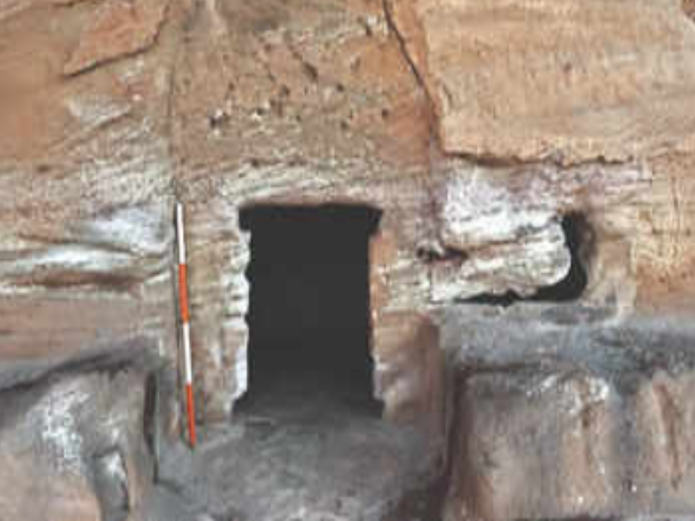Description

Disclaimer: Copyright infringement not intended.
Context
- Reportedly, archeologists have uncovered several archaeological treasures from the Bandhavgarh National Park in Madhya Pradesh.
Highlights of the findings
- Experts stated that the tiger reserve of the present day was once most likely part of an old trade route, through which traders passed and used the rock-cut caves as their shelters.
- Archeologists also got hold of a 1,500-year-old rock painting, along with several man-made water bodies, which are believed to be no lesser than 1,800-2,000 years old.
- The presence of the water bodies built at a height and used for collecting rainwater suggests that the habitation had a modern society.

About Bandhavgarh National Park
History
- The name ‘Bandhavgarh’ came from two words: Bandhav and Garh where the meaning of the first one is brother and the latter means fort.
- According to Ramayana, the great epic, Bandhavgarh was gifted to Lakshmana by his elder brother Rama after the battle of Lanka.
- The existing national park is named after this legendary Bandhavgarh Fort, which is situated on a hillock of the Vindhya range in Umaria.
- As per the ancient books, Shiv Purana and Narad Panch Ratna, the wrecked fort was being rebuilt by two monkeys who made a bridge between Lanka and the mainland.
- Until the shifting of capital to Rewa in 1617 A.D., the local rulers were based in the Bandhavgarh Fort, which is located atop the Bandhavgarh hill in the middle of the Bandhavgarh National Park.
- Bandhavgarh gradually became desolate once the capital was moved to Rewa, and as the forest took over, it was used as a royal hunting reserve.
Designation as National Park
- The devastation of the forests as a result of inadequate regulation severely affected Maharaja Martand Singh of Rewa.
- In 1968, a 105 sq km area was first designated as a national park based on his suggestion.
- Bandhavgarh was included in 1993 as Project Tiger expanded its sphere of influence, and the territory was later expanded to encompass a core area of 694 sq km and a buffer area of 437 sq km.
Flora
- The vegetation of Bandhavgarh Park is diverse and includes heavily forested hills as well as grasslands.
- The Sal and Bamboo species, which form various combinations with one another, dominate the tropical moist deciduous region in which Bandhavgarh National Park’s forest is located.
Fauna
- The Park is simply known for the various species of wild creatures and is best known for the preservation of the most astonishing tiger species.
- It is believed that every white tiger across the world has its trace to Bandhavgarh National Park.
- It is also worth mentioning here that Mohan was the first white tiger spotted in Bandhavgarh by the then Maharaja of Rewa.
- There are three core zones in the national park such as Tala, Khitauli and Magadhi and three zones are equally popular for tiger sightings.
- Additionally, Bandhavgarh is also home to a wide variety of animals, including chinkaras, nilgais, and bison, who graze on the grasslands.
|
PRACTICE QUESTION
Q) Which of the following statements with reference to Bandhavgarh National Park is/are incorrect?
1. The dominant tree species are Sal and Bamboo.
2. Bandhavgarh Fort is situated on a hillock of the Satpura range.
- 1 only
- 2 only
- Both 1 and 2
- Neither 1 nor 2
Correct Answer: 2
|

https://timesofindia.indiatimes.com/travel/travel-news/madhya-pradesh-2000-year-old-modern-society-unearthed-from-bandhavgarh-national-park/articleshow/100005360.cms












